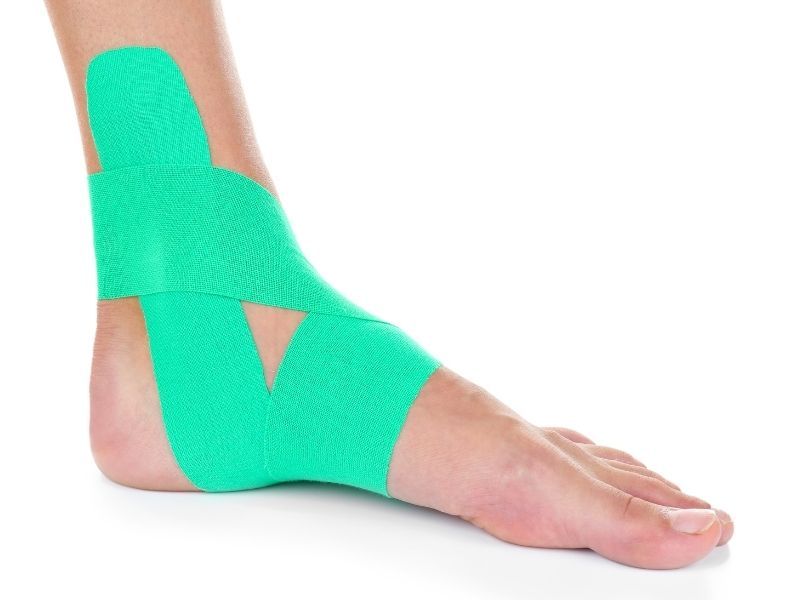Simple Exercise To Inhibit Psoas Muscle – Stop Digging And Do This!

In this post, we’ll explore two powerful techniques for psoas muscle release: reciprocal inhibition and post-isometric relaxation. Additionally, I’ll introduce you to a specific exercise called the Supine Hip Lift, which can be a game-changer in promoting psoas release.
Let’s get started on our journey to unlock hip flexibility!
Understanding Reciprocal Inhibition and Post-Isometric Relaxation
- Reciprocal Inhibition: Reciprocal inhibition refers to the concept that activating a muscle on one side of the body leads to the relaxation or release of the opposing muscle. For instance, when we contract our bicep, the tricep relaxes to allow the bicep to shorten. Similarly, to achieve a psoas release, we need to identify and activate the opposite muscle group, which, in this case, is the hip extensors comprising the glutes and hamstrings.
- Post-Isometric Relaxation: Post-isometric relaxation is a powerful technique used in manual therapy to reduce muscle tension. By contracting a muscle with some effort and following it with relaxation, the resting muscle tension decreases. While often overlooked in exercise routines, this technique can effectively aid in releasing tight muscles, including the psoas.
The Supine Hip Lift: A Powerful Exercise for Psoas Release
The supine hip lift is an excellent exercise for achieving reciprocal inhibition of the psoas. It also serves as a starting point for beginners due to its low intensity and potential for progression. Let’s learn how to perform this exercise step by step:
- Set Up: Lie on your back with your hips and knees bent at a 90-degree angle. Place your feet on a box, chair, or workout bench of similar height.
- Activation: Push your heels down into the box, engaging your hamstrings. This activation will initiate a posterior pelvic tilt, flattening the lower back and providing relief for those experiencing discomfort or sensitivity to lumbar spine extension.
- Inhibition: As you push your heels down and the pelvis rotates backward, the pressure on the box inhibits the hip flexors, including the psoas. Focus on allowing your hamstrings to lift your pelvis off the ground while keeping your lower back relaxed. Avoid excessive glute activation or arching of the back.
- Modification: To increase the activity on one side, lift one heel off the box while maintaining the pressure on the other foot. This modification enables you to target specific areas and address any muscle imbalances or weaknesses.
- Duration and Progression: The duration of the exercise will vary based on individual capacity. Some may sustain the position for minutes, while others may need to start with shorter intervals. Begin with what feels comfortable and gradually increase the duration as your strength and endurance improve. Seek guidance from a qualified health professional to determine the optimal duration and progression for your specific needs.
Conclusion
Incorporating psoas release techniques into your fitness routine can be immensely beneficial for restoring normal range of motion and alleviating tightness in the hip flexors. By understanding the concepts of reciprocal inhibition and post-isometric relaxation, you can engage in exercises that effectively relax and strengthen your hip muscles. The supine hip lift, in particular, offers an accessible starting point for beginners while allowing for progression as you build strength.
Remember to consult with a qualified health professional to tailor these techniques to your individual needs!
Sam Visnic
I’ve spent my life studying the fundamental aspects of human health with a focus on movement and clinical massage therapy. In a world of specialists, surgical procedures, drugs and quick fix remedies, I’m committed to finding and developing strategies that help people stuck at the “gap”. Over the last 20 years I’ve studied dozens of systems and methodologies for uncovering the root cause of aches and pains, along with postural and movement issues. Pain science, the art and science of hands-on soft tissue massage techniques, myofascial release, and coaching movement is essential in my practice. Integrating different methods but above all deciphering WHEN to use different techniques with different people and situations, along with integration of movements that people want to be able to do again is the key to long term success with my incredible track record with clients. Understanding the various elements that contribute to conditions and the power of communication and education makes my Release Muscle Therapy program separate from other hands-on therapy approaches.
Blogs You May Be Interested In
Categories
-
Deep Gluteal Pain Syndrome
-
Deltoids
-
Fallbrook
-
Foam Rolling
-
Glutes
-
Hamstrings
-
Hypnosis For Pain
-
Lats
-
Levator Scapulae
-
Lifestyle
-
Massage Therapy
-
Mobility
-
Movement and Exercise
-
Murrieta
-
Muscles
-
Nutrition
-
Obliques
-
Pain
-
Pectorals
-
Piriformis
-
Plantar Fasciitis
-
Product Review
-
Psoas
-
Quadratus Lumborum
-
Quadriceps
-
Rhomboids
-
Serratus Anterior
-
SI Joint
-
Sternocleidomastoid
-
Stretching
-
Subscapularis
-
Temecula
-
TMJ
-
Trapezius
-
Uncategorized
















